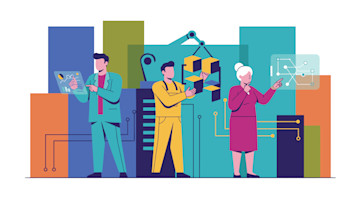In recent years, sales of automobiles in the United States have been affected by supply challenges and changing consumer preferences caused by the COVID-19 shutdowns. While those are certainly important drivers of the industry, the imposition of tariffs starting in the middle of 2018 and the renegotiation of free trade agreements were expected to have an impact as well. This article will explore some trends in the automotive industry to see if we can determine if it was due to trade or COVID.
Will They or Won’t They (Get Sales Back up)?
From January 2015 to December 2019, sales of automobiles averaged 17.2 million units per year. Sales hit their lowest level in April 2020 of just 8.4 million automobiles sold on an annualized basis, lower than even the worst point of the 2008 financial crisis. Since then, sales have recovered but have not quite returned to pre-pandemic averages. Only in two months, March and April 2021, have sales exceeded the average from 2015 to December 2019.
Don’t Tariff Apart
Japan has been the largest importer of automobiles and parts to the United States by value since well before the tariffs on China. Unlike many other trading partners, the value of imports has been on a steady increase since 2018. Imports from South Korea were on a downward trend until 2020, after which they rapidly increased, becoming the second-largest source of automobiles and components.
Imports from Mexico have been on a steady decline since 2017, which accelerated in 2020. Canada saw some rapid growth from 2017 to 2019, but the value of their imports to the United States steadily declined from 2019 to 2022. This trend reversed in 2023, when Canada rapidly accelerated the pace of sales to the United States to nearly surpass South Korea as the second-largest source of automobiles and components.
While a majority of the news coverage went to several rounds of tariffs imposed between the United States and China, the tariffs had relatively little impact on the market for finished automobiles and parts. Compared to other countries, the United States has imported a relatively small value of components or finished automobiles from China.
We’ll Always Have FDI
While the renegotiation of free trade agreements and the imposition of tariffs were front of mind prior to the disruptions caused by the COVID shutdowns, their impacts on the source of U.S. imports of automobiles and components seem to be small compared to other industries. The relative positions of trading partners have changed marginally. The number of automobiles and components imported from China have fluctuated, but their value relative to other trading partners remains minimal. Rather than alter the origin of imported automobiles and components, the largest impact of the tariffs may have been to inspire more foreign direct investment in the United States. After all, even before the supply challenges caused by the COVID shutdowns, foreign automakers were building new plants in the country.


To read the rest of the Digital Manufacturing Issue of MT Magazine, click here.






